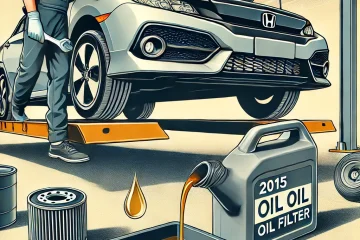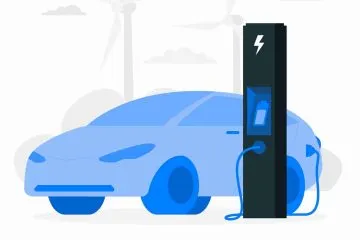How Often Should You Drive Your Car?

Most of us are beguilingly obsessed with riding our cars. We can drive to brief trips covering as little as 5 kilometers not because we are lazy but because we hate trekking and cherish the moments behind the wheels. Contrariwise, some people totally hate driving and would rather trek or board public buses instead of driving.
If you fall in the category that hates riding, don’t stay too long in that cocoon of self-satisfaction because if you don’t drive for long, you may end up with flat-spotted tires, a dead battery, a stained paint job, and other similar problems. So, how often should you drive your car? Our today’s post will educate you further.
How Often Should You Drive Your Car? – Reasons You Shouldn’t Let Your Car Sit Too Long
Letting your car sit for weeks or even months in the garage is like setting a time bomb far away from the masses to tame an enemy, hoping the masses won’t suffer. It will explode and the impact would affect both the masses and the enemy.
When a vehicle sits way too long, the battery will discharge and spoil, the tires will go flat, and many other parts will be faulted.
It’s strongly recommended you drive your vehicle ten miles at a speed of 50mph every month to ensure the battery doesn’t lose its potency, the tires don’t go flat, and every other part will stay optimally fit. Here are the reasons you must never let your car sit for an extended period:
- To ensure the tires don’t lose air. When cars sit for long, the heavy car weight will pressure the tires, triggering the development of flat spots on the grounded segments. If you drive the car, the inflated tires won’t lose air.
However, if you don’t drive the car for long, the under-inflated tires will develop permanent flat spots, which would affect your car performance and the health of the tires.
- Pests and bugs would build a home in your cars. Left to sit for extended periods, rodents and bugs would build a home in its exhaust outlets and under the hood. The hungry ones would eat and damage soy parts, organic materials, and wiring harness, leaving the cars faulty and unable to start when next you drive it.
- Moisture will probably build up in the car gas tank and oil. If you allow your car to sit for long, moisture would likely develop in the oil and gas tank, which can make the affected parts to corrode.
What Happens When I Leave My Car Garaged for Long?
Leaving your car at home is undeniably beneficial. You won’t have to pay for high fuel and parking expenses. You will avoid the troubles of reckless motorists, as well. However, if your car is garaged longer than recommended, here is what will happen:
The battery will die
One likely happening when you start your car after garaging it for extended periods is an ignition failure. The most likely reason for the ignition failure is a discharged or damaged battery.
Leaving your ride to sit for weeks would likely damage the battery, and that means the car won’t start when you ignite it. Save yourself the costs and hassles by disconnecting the battery terminals before garaging your car.
The tires will deteriorate
One probable happening when a car is left in the garage for long is the deterioration of tires. Even when a car is garaged, the tires are still in use. That’s because they will hold the weight of the car throughout the storage period. No matter how durable and robust the tires are, they won’t hold weight for long before they are warped, deflated, and flattened.
You can still inflate the tires back, but don’t forget the risk involved in riding in a car with such kinds of tires, so have them checked by a pro before you ride in the car.
Moisture will buildup
Regardless of the climate in your home, if a car is left for extended periods, moisture will accumulate in the brake fluid reservoir, cabin corners, and gas tank, leading to corrosion. Such happenings would compromise the safety and efficiency of the affected car components, which could mean more money for replacement and repairs.
The paint will fade
A poorly conditioned car first shows the signs on the bodywork. Storing your car outside with no protective covering means they will have to take all the vicious effects of ultraviolet rays, wind, and rain. Left outside for extended periods, the paint in your car will be dulled or cracks will pop up on the bodywork.
Breakdown of the fuel pump
Another likely happening when your car sits for long is faulting of the fuel pump. When not in use, the flow of fluids in the fuel pump is cut short, which could lead to costly faults. A damaged fuel pump will make it impossible for the car to start.
Considering that such issues aren’t easy to detect, you will have no option but to get a mechanic to do the repairs, which would add to your overall repair bill.
Problems with rotors and brakes
When they sit idly for many hours, car rotors and brakes are likely to rust. Fault brakes tent to produce a high-pitched squeaking or grinding noise once the brakes are applied. Confirm to be sure the brakes are working before you ride the car on busy roads.
The gas tank may breakdown
If you thought the engine and transmission systems are the only costly car parts to repair, you possibly haven’t had the gas tank replaced. The gas tank is one of the core parts of the car that if fault would mean no rides.
Rust formation on the gas tank would lead to leaks, which could be disastrous. It’s good to understand that when a fuel tank has suffered rusting, replace all the connected valves, fuel pumps, fuel tank, and pipes, which would not be cheap.
How Often Should You Drive Your Car—Conclusion
Wondering how often should you drive your car and the risks involved if you don’t drive the car? Our today’s post has educated you on everything you must know to get your vehicle working, even when you decide to garage it for an extended period.













No Comment